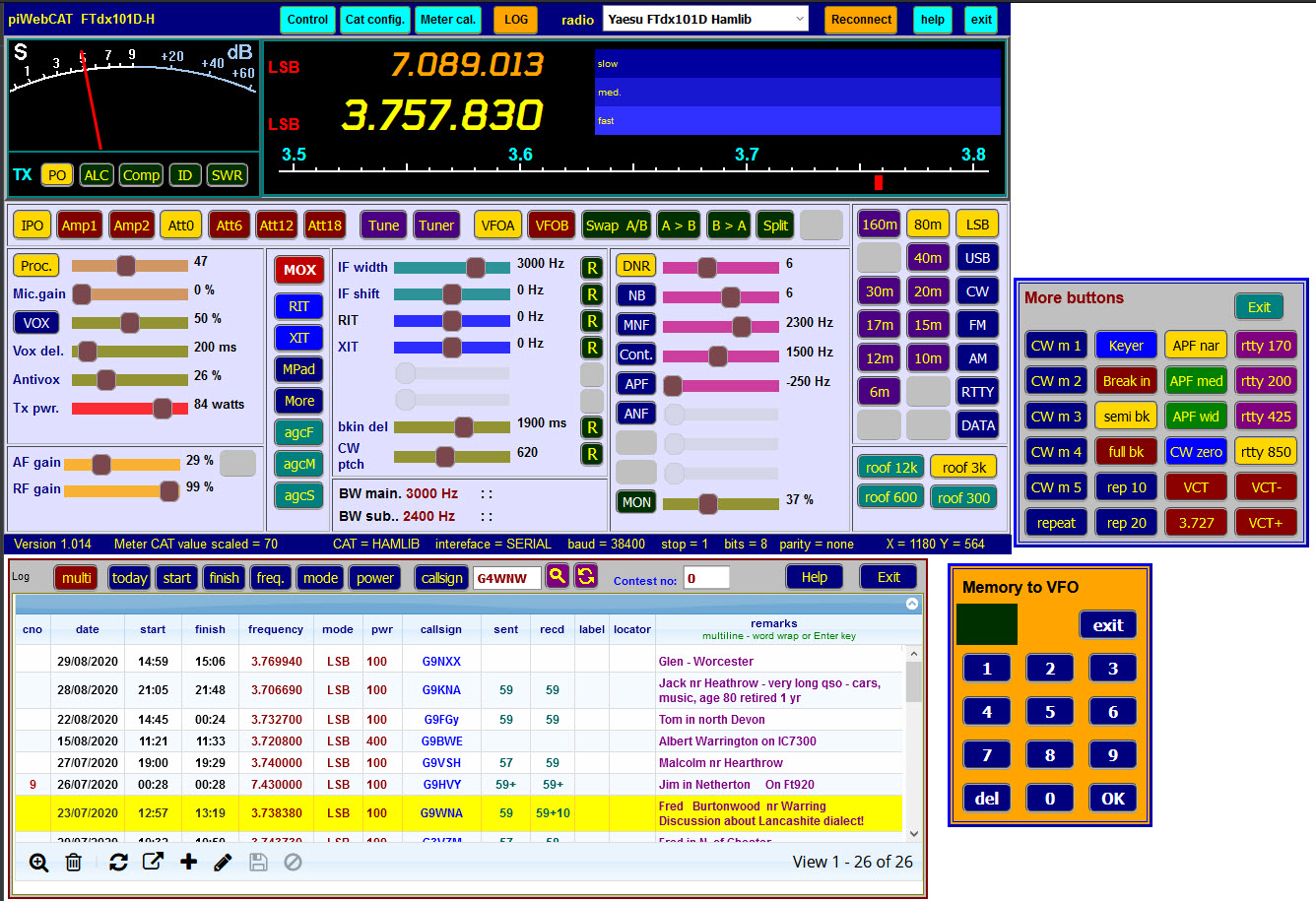2.2 Window size and positioning
The image below is piWebCAT's main window configured for my FTdx101D, together
with the three popup windows: log, memory selector and extra buttons.
The application starts with the main window only.
This is of fixed size: 1020 x 545 pixels.
It therefore fits within the display limits of modern 1200 x 800 tablets and older 1024 x 768 monitors.
Positioning - memory and button popup windows.
The small key pads (memory select and extra buttons) popup within the main window and can be be used at
their popup positions. They are mouse-draggable and so can be moved outside the main window as shown.
(Not usually done with the memory keypad because it disappears as soon as you make a selection)
Positioning: log popup window.
Clicking the top bar log button displays the log below the main window.
The log window is not resizeable but its size can be pre-determined as logX and logY in the settings table.
It can thereby be tailored to your display. There is therefore, for example, plenty of room for a usable log
to be located below or alongside the main window on a standard 1920 x 1080 pixel HD monitor.
The three popup windows are in fact all part of the same main control web page.
They are created when the main window is created and simply initially hidden until activated.
This means for example, that the 24 extra buttons can be identical in operation and configuration
to the the 66 main window buttons. Furthermore, the station log window has full access to all the
radio parameters to facilitate auto insertion of frequency, mode and RF power into the log.
Note that the three popup windows must remain within the web-browser window.
Therefore, to achieve the display below, I first must drag the web browser window to a suitable size
to accommodate all four piWebCAT windows.

Dragging on a tablet with finger (or Bluetooth or OTG USB mouse)
On an Android or Apple tablet computer (or phone), windows are finger-drag positionable.
This includes piWebCAT's main window. But the main window has a finger-drag tuner.
After some experimentation and internet research, I managed to resolve this potential conflict.
Now, if you drag your finger within the tuning window, or over a slider control, the window
itself doesn't move. If you drag the window elsewhere it does move.
... So you can separately both position the window and use the controls.